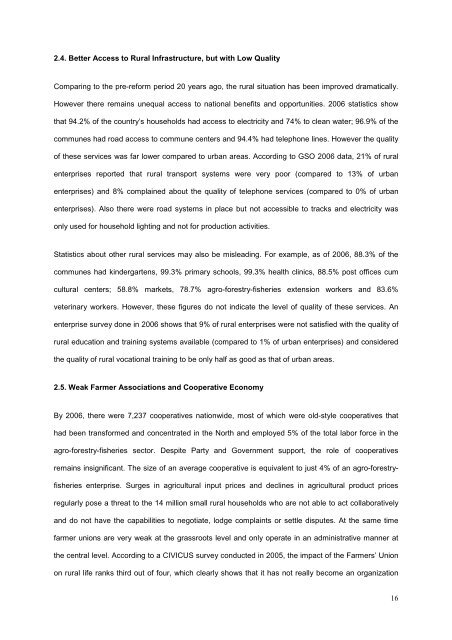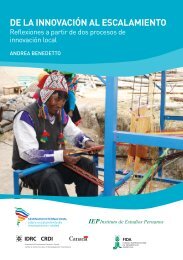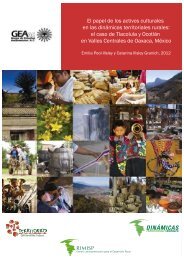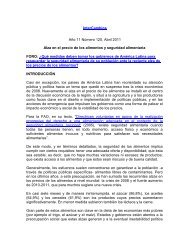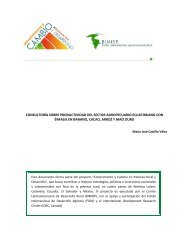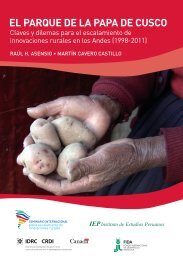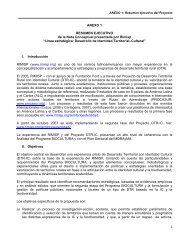Vietnam's Agrarian Reform, Rural Livelihood and Policy ... - Rimisp
Vietnam's Agrarian Reform, Rural Livelihood and Policy ... - Rimisp
Vietnam's Agrarian Reform, Rural Livelihood and Policy ... - Rimisp
Create successful ePaper yourself
Turn your PDF publications into a flip-book with our unique Google optimized e-Paper software.
2.4. Better Access to <strong>Rural</strong> Infrastructure, but with Low QualityComparing to the pre-reform period 20 years ago, the rural situation has been improved dramatically.However there remains unequal access to national benefits <strong>and</strong> opportunities. 2006 statistics showthat 94.2% of the country’s households had access to electricity <strong>and</strong> 74% to clean water; 96.9% of thecommunes had road access to commune centers <strong>and</strong> 94.4% had telephone lines. However the qualityof these services was far lower compared to urban areas. According to GSO 2006 data, 21% of ruralenterprises reported that rural transport systems were very poor (compared to 13% of urbanenterprises) <strong>and</strong> 8% complained about the quality of telephone services (compared to 0% of urbanenterprises). Also there were road systems in place but not accessible to tracks <strong>and</strong> electricity wasonly used for household lighting <strong>and</strong> not for production activities.Statistics about other rural services may also be misleading. For example, as of 2006, 88.3% of thecommunes had kindergartens, 99.3% primary schools, 99.3% health clinics, 88.5% post offices cumcultural centers; 58.8% markets, 78.7% agro-forestry-fisheries extension workers <strong>and</strong> 83.6%veterinary workers. However, these figures do not indicate the level of quality of these services. Anenterprise survey done in 2006 shows that 9% of rural enterprises were not satisfied with the quality ofrural education <strong>and</strong> training systems available (compared to 1% of urban enterprises) <strong>and</strong> consideredthe quality of rural vocational training to be only half as good as that of urban areas.2.5. Weak Farmer Associations <strong>and</strong> Cooperative EconomyBy 2006, there were 7,237 cooperatives nationwide, most of which were old-style cooperatives thathad been transformed <strong>and</strong> concentrated in the North <strong>and</strong> employed 5% of the total labor force in theagro-forestry-fisheries sector. Despite Party <strong>and</strong> Government support, the role of cooperativesremains insignificant. The size of an average cooperative is equivalent to just 4% of an agro-forestryfisheriesenterprise. Surges in agricultural input prices <strong>and</strong> declines in agricultural product pricesregularly pose a threat to the 14 million small rural households who are not able to act collaboratively<strong>and</strong> do not have the capabilities to negotiate, lodge complaints or settle disputes. At the same timefarmer unions are very weak at the grassroots level <strong>and</strong> only operate in an administrative manner atthe central level. According to a CIVICUS survey conducted in 2005, the impact of the Farmers’ Unionon rural life ranks third out of four, which clearly shows that it has not really become an organization16


